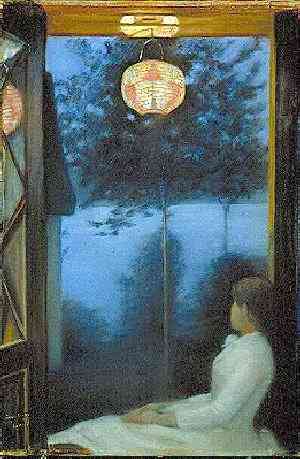Oda Krohg (1860-1935)
Get a Krohg Certificate of Authenticity for your painting (COA) for your Krohg drawing.
For all your Krohg artworks you need a Certificate of Authenticity (COA) in order to sell, to insure or to donate for a tax deduction.
Getting a Krohg Certificate of Authenticity (COA) is easy. Just send us photos and dimensions and tell us what you know about the origin or history of your Krohg painting or drawing.
If you want to sell your Krohg painting or drawing use our selling services. We offer Krohg selling help, selling advice, private treaty sales and full brokerage.
We have been authenticating Krohg and issuing certificates of authenticity since 2002. We are recognized Krohg experts and Krohg certified appraisers. We issue COAs and appraisals for all Krohg artworks.
Our Krohg paintings and drawings authentications are accepted and respected worldwide.
Each COA is backed by in-depth research and analysis authentication reports.
The Krohg certificates of authenticity we issue are based on solid, reliable and fully referenced art investigations, authentication research, analytical work and forensic studies.
We are available to examine your Krohg painting or drawing anywhere in the world.
You will generally receive your certificates of authenticity and authentication report within two weeks. Some complicated cases with difficult to research Krohg paintings or drawings take longer.
Our clients include Krohg collectors, investors, tax authorities, insurance adjusters, appraisers, valuers, auctioneers, Federal agencies and many law firms.
We perform Oda Krohg art authentication, appraisal, certificates of authenticity (COA), analysis, research, scientific tests, full art authentications. We will help you sell your Oda Krohg or we will sell it for you.

Oda Krohg, born Othilia Pauline Christine Lasson, was a Norwegian painter, and the wife of her teacher and colleague Christian Krohg. She had little formal art education, but she quickly absorbed the knowledge of the artistic environment she was a part of. Her debut was in 1886 with “Ved Christianiafjorden (japansk lykt)” (At the Oslofjord (Japanese light)), now in the National Gallery of Norway. Her first years as an artist are seen as an example of new romantic painting. Her later portrait works had another, more robust impression.

She was the daughter of public attorney Christian Lasson and Alexandra von Munthe av Morgenstierne. She was the sister of Per Lasson and Bokken Lasson. She got married in 1881 with the businessman Jørgen Engelhardt (1852-1921), with whom she had two children. She split from Engelhardt in 1883, and divorced in 1888. In 1885 she became a student of Erik Werenskiold and Christian Krohg. She married Krohg in October 1888. In 1885, daughter Nana was born, and in 1889, their son Per, who also would be a known painter. In the period 1901-1909, the family lived in Paris.

Oda Krohg is known by her landscapes, like “Ved Christianiafjorden (Japansk lykt)” (1886) and “Ved engen (Kinesisk lykt)” (On the meadow (Chinese light), 1889) and other works like “En abonnent på Aftenposten” (A subscriber of Aftenposten, 1887), “Fra festen” (1892) and “Rouge et Noir” (1912) and the brave “Christian Krohg på Karl Johan” (Christian Krohg at Karl Johansgate, 1912). She also painted portraits of, among other Aasta Hansteen, Ivar Arosenius, Gunnar Heiberg, Johanne Dybwad and Christian Krohg.
Oda was also a central figure in the anticulture movement of the Christiania Bohemians (Kristiania-bohemen) in the 1880s and 1990s. The figure of the “Bohemian Princess” has to some extent obscured the impression of a competent painter. In Edvard Munch’s painting “kafeinteriør” (1893), Oda is surrounded of bohemians and people close to them : Munch, Christian Krohg, Jappe Nilssen, Hans Jæger, Gunnar Heiberg og Jørgen Engelhart. Oda is said to have had affairs with four of these men: Engelhart, Jæger, Heiberg and Krohg. In the book Syk Kjærlighet (Seven Loves, 1893), Hans Jæger describe a love triangle where he was strongly in love with a woman who was to marry a painter. Oda is said to have been the model for the woman, and the book describes the relation between Jæger, Oda og Christian in the summer and autumn of 1888.
She also wished to be a writer, but published very little. Her life is described in Ketil Bjørnstad’s novel “Oda!” (1983). She is buried at the Æreslund in the Vår Frelsers gravlund in Oslo. Still wondering about a Norwegian painting in your family collection? Contact us…it could be by Oda Krohg.
Reviews
1,217 global ratings
5 Star
4 Star
3 Star
2 Star
1 Star
Your evaluation is very important to us. Thank you.
